As part of a weekend road trip to Ohio and West Virginia, I made a stop in the City of Toronto.
Toronto, Ohio is one of many small cities and towns in the upper Ohio Valley within the Ohio-West Virginia-Pennsylvania border region. Toronto, Ohio’s population, according to the 2010 US census, is 5,091, or 0.0019% the population of Toronto, Ontario. Toronto is not only much smaller than its namesake, it is also 97.1% white, and almost entirely English-speaking.
Toronto has its own police and fire departments, a supermarket and a high school, but the nearest motels, hospitals and big-box retailers are in Steubenville, 15 kilometres to the south.
Toronto, nicknamed the “Gem City”, was named for the Ontario capital in 1882 when the settlement of Sloan’s Station incorporated as a city. The name Toronto was picked because local businessman W.F. Dunspaugh, a Toronto (Ontario) native, declared his hometown “a place worth emulating.” Toronto, Ohio is the only other city in the world named Toronto, but other Torontos exist, such as the town of Toronto, South Dakota (population 212) and the town of Toronto, New South Wales, Australia (population 5,161).
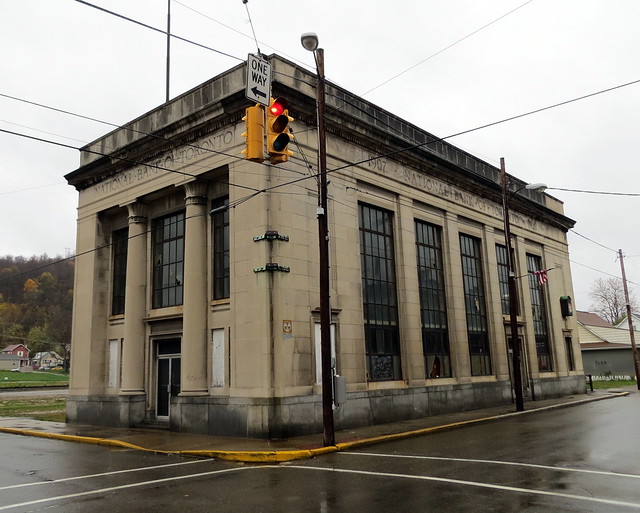 Definitely not the Toronto-Dominion Bank; the shuttered National Bank of Toronto
Definitely not the Toronto-Dominion Bank; the shuttered National Bank of Toronto
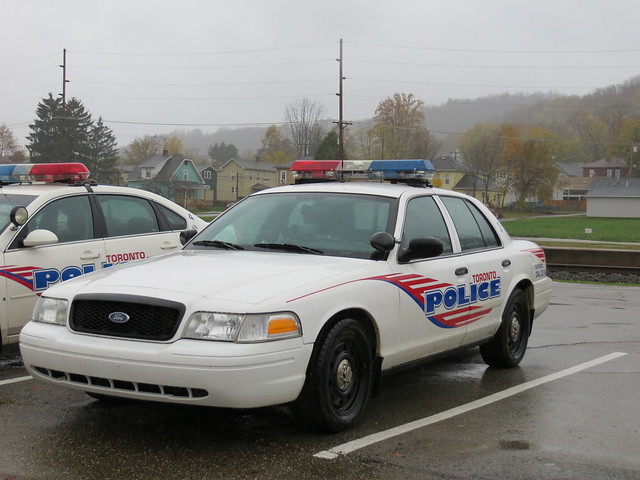 Toronto Police
Toronto Police
Downtown Toronto (Ohio) has seen better days, but isn’t entirely void of life. Among the stores open that Sunday were a Dollar General (the largest store on the block), a pizzeria, a cards shop, and a restaurant/bar. Other businesses, such as a hair salon and optometrist, were also on the main commercial block. The most imposing structures were an old hotel, used as a haunted house in the few weeks prior to Halloween, and a shuttered bank building of the National Bank of Toronto.
The economy of Toronto is better than many of the other towns in the Ohio Valley. The largest employer is a Titanium mill, which has an economic niche, unlike other steel mill towns that line the Ohio River. Nearby, coal mines and coal power stations dot the landscape; this is coal country.
In a Toronto Star article published in 2007, the mayor was worried that in the 2010 Census Toronto’s population would drop below 5,000, demoting the city to village status. The city’s population in 2000 was 5,676. Losing city status would force Toronto to give up its fire and police departments and lose other perks. Luckily, the population decreased slower than expected, and it will remain a city until at least the next decennial census in 2020.

4th Street, Toronto’s Downtown
I went into the downtown restaurant, sat at the bar had a beer and watched part of three NFL games simultaneously playing on three separate televisions. I struck up a conversation with the bartender and a few patrons. I was asked where I was from, as I was told Toronto was the kind of place where everyone knew everyone and their business; I gladly took the opportunity to engage in friendly and good-humoured banter about our two Torontos. They were able to convince me of two things that Toronto, Ohio had over its larger namesake: better sports teams to root for (Heinz Field, home of the Pittsburgh Steelers, and the venues of the Pittsburgh Pirates and Penguins are less than an hour’s drive away) and cheaper beer. One other customer asked if I spoke French, I said I didn’t. He then told me when out of town he says where he’s from, others would think of Canada and ask him if he spoke French. That conversation, made possible by cheap Budweiser and live football, was a great way to spend an hour, and I felt, well, at home.
The bar owners openly support President Barack Obama for re-election. A poster for a recent pro-Obama rally was posted on the wall, though I was told that Toronto was split about 50/50 for Obama or Mitt Romney. The television in my hotel, billboards, and the car radio were inundated with election ads for both presidential candidates, as well as for Congressional candidates and local officials. Among the many billboards and lawn signs I spotted were messages to “Stop the War on Coal: Fire Obama”, but the Democratic Party hasn’t given up in this corner of what Jon Stewart called last night, “Swing State Hell”.

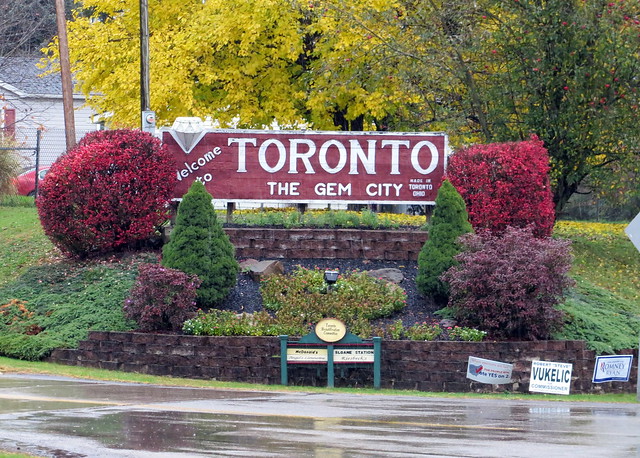
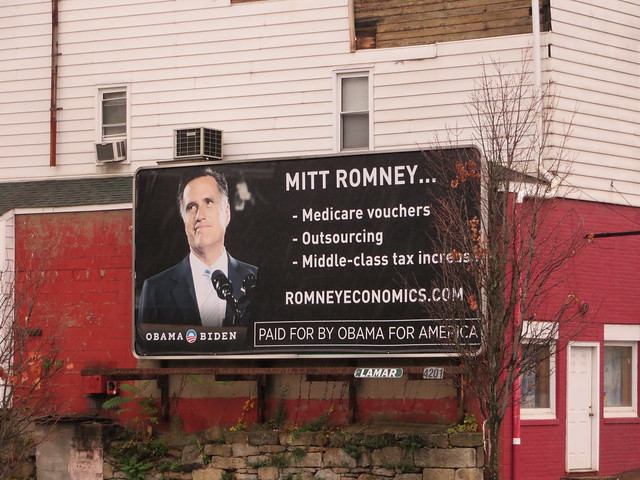

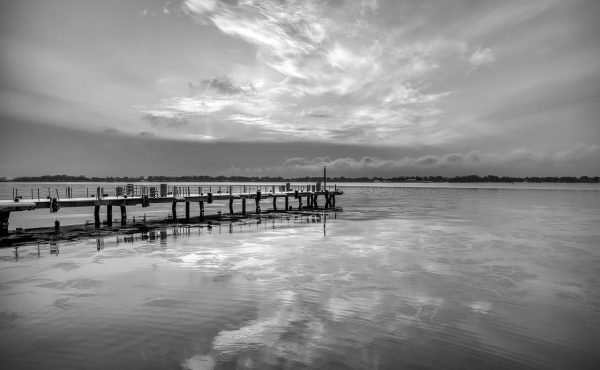

5 comments
Interesting how the definition of ‘city’ varies. The Australian Toronto, despite having a slightly larger population than its Ohio namesake city, is still a town within the city of Lake Macquarie (pop. 189,000) and part of the greater Newcastle (pop. 540,000) metro area. To become a city under NSW law, Toronto would have to effectively quintuple its population!
“They were able to convince me of two things that Toronto, Ohio had over its larger namesake… …cheaper beer”
Because cheaper is better!?
…if you like the king of tastless beer.
The TD U.S. branches unfortunately also spell “cheque” as “check”, but don’t have branches in Ohio for some reason.
Great report; thank you Sean.
Hey, when you’re in Middle America, you drink Middle American beer. Bud isn’t great beer (I do enjoy Ontario and Quebec craft brews the most) but at least it wasn’t Fudd!